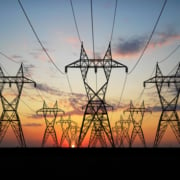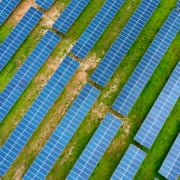
H.R.1: What You Should Know About the Environmental and Energy Provisions in the “One Big Beautiful Bill” Act

On July 4, President Trump signed H.R.1—the “One Big Beautiful Bill,” referred to as the OBBB—into law. This sweeping tax and policy law, enacted through the process of budget reconciliation requiring a simple majority vote by Congress, carries significant implications for environmental funding, clean energy development, and climate-related programs administered by the U.S. Environmental Protection Agency (EPA), as well as the tax code. Much of the provisions affect programs and funding originally authorized under the 2022 Inflation Reduction Act (“IRA”), which was former President Biden’s signature budget reconciliation bill. Below, we outline some of the key features of the OBBB environmental and energy provisions.
Environmental Provisions
In an effort to hit topline federal spending reductions, the OBBB includes funding cuts for environmental programs previously appropriated to the EPA. This includes rescinding unobligated balances for the following programs authorized under the IRA:
- Greenhouse gas (GHG) reduction fund (rescind unobligated balance of the $27 billion appropriated for nonprofit organizations to use for direct and indirect investment in various qualified environmental projects);
- Environmental and climate justice block grants (rescind unobligated balance of the $2.8 billion for grants related to environmental and climate justice activities);
- Environmental product declarations (rescind unobligated balance of the $250 million to develop and implement a program to standardize and increase transparency regarding environmental product declarations for construction materials that include assessments of GHG usage);
- Funding for implementing the American Innovation and Manufacturing (AIM) Act of 2020 (rescind unobligated balance of the $38.5 million appropriated to carry out AIM Act goal to phase down hydrofluorocarbons (HFCs), including competitive grants to shift to lower global warming potential (GWP) refrigerants);
- Renewable fuels standards under Clean Air Act § 211(o) (rescind unobligated balance of the $15 million for test/protocol development with respect to environmental and public health effects of a fuel or fuel additive, procedures for determining lifecycle greenhouse gas emissions of a fuel, and the impacts of transportation fuels); and
- GHG corporate reporting (rescind unobligated balance of the $5 million for enhanced standardization and transparency of corporate climate action commitments and plans to reduce GHG emissions).
The OBBB includes other fee- and royalty-related provisions to enact policy changes that seek to reduce burdens with domestic energy development, including:
- Delay in methane emissions fee: OBBB delays a fee imposed by the IRA on certain methane emissions from oil and natural gas sources for 10 years, to 2034. This fee applies to excess emissions as defined in the IRA from facilities subject to EPA’s subpart W reporting under the greenhouse gas reporting program, unless eligible for an exemption. Congress rescinded EPA’s 2024 rule implementing the methane emissions fee by a Congressional Review Act resolution signed by President Trump in March 2025.
- Expedited National Environmental Policy Act of 1969 (NEPA) review: The OBBB creates a new White House Council on Environmental Quality program in which a sponsor of a project requiring environmental review under NEPA can obtain expedited review by paying an optional fee—125% of the anticipated costs to prepare the environmental assessment or environmental impact statement—to have the environmental assessment completed no later than 180 days after paying the fee and the environmental impact statement completed within a year of the date of publication of the notice of intent to prepare the environmental impact statement.
Tax Implications
The legislation has significant tax implications for industry sectors with environmental impacts. This includes:
- Phasing out the Section 45X Advanced Manufacturing Production Tax credit: The Section 45X credit—which provides a tax credit for manufacturers of eligible components that are produced and sold by a taxpayer to an unrelated party—will terminate for wind components sold after 2027. The Section 45X credit applicable to other eligible components will be phased out in accordance with the original IRA phaseout schedule (with phaseout beginning in 2030), but the OBBB now imposes a commensurate phaseout schedule for the Section 45X credit applicable to critical minerals, which was previously excluded from any phaseout schedule under the IRA.
- Phasing out the Section 45Y and Section 48E Clean Energy Production and Investment Tax Credits for Wind and Solar Projects: The Section 45Y and 48E credits—related to clean electricity production and investments, respectively—will terminate for qualifying wind and solar facilities that are not placed in service by the end of 2027, with the exception of projects that begin construction by July 4, 2026, (i.e., 12 months after the OBBB’s enactment). The termination cliff is not applicable to other technologies that are eligible for the Section 45Y credit or the Section 48E credit, such as qualifying energy storage technologies, which would remain subject to the original IRA phaseout schedule.
- Implementing Prohibited Foreign Entity-Related Restrictions: The OBBB implements sweeping restrictions relating to “prohibited foreign entities” (or “PFEs”) for the Sections 45Y, 48E, and 45X credits,[1] disqualifying eligibility for such credits if the taxpayer is a PFE or if the taxpayer receives “material assistance” from a PFE. “Material assistance” is determined using a cost-based formula benchmarked against technology-specific thresholds. In respect of the Sections 45Y and 48E credits, the material assistance restrictions apply to facilities that begin construction after December 31, 2025, and in respect of the Section 45X credit, such restrictions generally apply to components manufactured in 2026 or later.
- Terminating Clean Hydrogen Production Tax Credits: The OBBB erminates the Section 45V Clean Hydrogen Production credit for projects on which construction begins after December 31, 2027. Significantly, the OBBB’s termination timeline is five years earlier than the current IRA sunset date for the Section 45V credit.
- Extending the Section 45Z Clean Fuel Production Credit: The bill extends the Section 45Z Clean Fuel Production Credit by two years, through 2029 (prior to enactment, these credits would expire in 2027). Additionally, credit eligibility for fuel produced after December 31, 2025, is contingent on such fuel being exclusively derived from feedstock produced or grown in the United States, Mexico, or Canada, and its emissions rates cannot be negative (with an exception for animal manure-derived transportation fuels).
- Ending the tax credit for electric vehicles (EVs) and related infrastructure: The Section 30D Clean Vehicle credit—which allows consumers to obtain a $7,500 tax credit for purchasing a new EV and $4,000 for used EVs—will now terminate on September 30, 2025. Additionally, the Section 30C credit for EV charging infrastructure will terminate after June 30, 2026.
Other Notable Energy Provisions
The OBBB contains other notable provisions related to the energy sector, including:
- Increased royalties on oil and natural gas leases: The OBBB restores the pre-IRA royalty rates on oil and gas leases from 16.6% to 12.5%, and repeals the IRA-codified royalty imposed on methane produced from oil and gas leases on federal lands and waters. The OBBB would also require the Secretary of the Interior to conduct a minimum of four oil and gas lease sales of available land in nine western states per year, and 30 region-wide oil and gas lease sales over the next 15 years (at least two per year). It also removes Biden-era restrictions on leasing in the Arctic National Wildlife Refuge and National Petroleum Reserve in Alaska.
- Funding for critical minerals mining: Congress appropriated $5 billion to the Secretary of Defense for investments in critical minerals supply chains, as well as $2 billion to improve the S. stockpile of critical minerals through the National Defense Stockpile Transaction Fund.
- S. petroleum reserves: $171 million is appropriated to the Department of Energy to acquire petroleum products for storage in the Strategic Petroleum Reserve.
- “Energy Dominance” grant: $1 billion in funding is appropriated for the Department of Energy’s loan program to support various energy initiatives.
Next Steps
Federal activity now shifts to the individual agencies to implement the new law, including regulatory changes that will provide opportunities for public comment. Entities across manufacturing, energy, transportation, infrastructure, real estate, and other sectors should also watch for state-level environmental actions and funding opportunities as federal incentives wane.
Sidley Austin’s Environmental and Energy practices are closely tracking the progress of this law and related regulatory developments. We are available to advise clients on risk assessments and compliance protocols, and investment planning in response to the OBBB and the coming regulatory changes.
[1] There are similar restrictions applicable to the Section 45Q carbon capture credit and the Section 45Z clean fuel production credit.
This post is as of the posting date stated above. Sidley Austin LLP assumes no duty to update this post or post about any subsequent developments having a bearing on this post.




